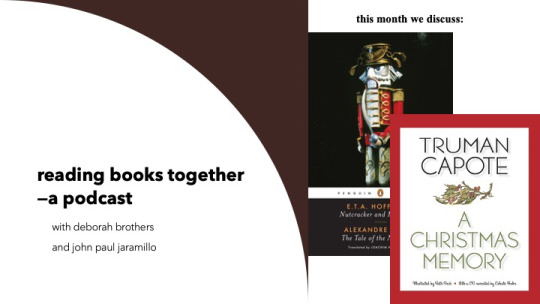#novel fiction
Explore tagged Tumblr posts
Text

the holy grail types of fanfic
#writerscommunity#enemies to lovers#creative writing#writers life#fanfiction#archive of our own#ao3#ao3 writer#ao3feed#ao3 fanfic#fiction writing#female writers#writers on tumblr#my fic#original story#original character#fanfic writing#femme fatale#fanfic#enemies to lovers trope#writing tropes#character tropes#dark romance#romance novels#novel writing#indie author#fiction#fanfic meme#writing memes#creative process
65K notes
·
View notes
Text
Other Words for "Look" + With meanings | List for writers
Many people create lists of synonyms for the word 'said,' but what about the word 'look'? Here are some synonyms that I enjoy using in my writing, along with their meanings for your reference. While all these words relate to 'look,' they each carry distinct meanings and nuances, so I thought it would be helpful to provide meanings for each one.
Gaze - To look steadily and intently, especially in admiration or thought.
Glance - A brief or hurried look.
Peek - A quick and typically secretive look.
Peer - To look with difficulty or concentration.
Scan - To look over quickly but thoroughly.
Observe - To watch carefully and attentively.
Inspect - To look at closely in order to assess condition or quality.
Stare - To look fixedly or vacantly at someone or something.
Glimpse - To see or perceive briefly or partially.
Eye - To look or stare at intently.
Peruse - To read or examine something with great care.
Scrutinize - To examine or inspect closely and thoroughly.
Behold - To see or observe a thing or person, especially a remarkable one.
Witness - To see something happen, typically a significant event.
Spot - To see, notice, or recognize someone or something.
Contemplate - To look thoughtfully for a long time at.
Sight - To suddenly or unexpectedly see something or someone.
Ogle - To stare at in a lecherous manner.
Leer - To look or gaze in an unpleasant, malicious way.
Gawk - To stare openly and stupidly.
Gape - To stare with one's mouth open wide, in amazement.
Squint - To look with eyes partially closed.
Regard - To consider or think of in a specified way.
Admire - To regard with pleasure, wonder, and approval.
Skim - To look through quickly to gain superficial knowledge.
Reconnoiter - To make a military observation of a region.
Flick - To look or move the eyes quickly.
Rake - To look through something rapidly and unsystematically.
Glare - To look angrily or fiercely.
Peep - To look quickly and secretly through an opening.
Focus - To concentrate one's visual effort on.
Discover - To find or realize something not clear before.
Spot-check - To examine something briefly or at random.
Devour - To look over with eager enthusiasm.
Examine - To inspect in detail to determine condition.
Feast one's eyes - To look at something with great enjoyment.
Catch sight of - To suddenly or unexpectedly see.
Clap eyes on - To suddenly see someone or something.
Set eyes on - To look at, especially for the first time.
Take a dekko - Colloquial for taking a look.
Leer at - To look or gaze in a suggestive manner.
Rubberneck - To stare at something in a foolish way.
Make out - To manage to see or read with difficulty.
Lay eyes on - To see or look at.
Pore over - To look at or read something intently.
Ogle at - To look at in a lecherous or predatory way.
Pry - To look or inquire into something in a determined manner.
Dart - To look quickly or furtively.
Drink in - To look at with great enjoyment or fascination.
Bask in - To look at or enjoy something for a period of time.
#on writing#creative writing#writing#writing tips#writers block#how to write#thewriteadviceforwriters#writeblr#writers and poets#writers on tumblr#novel writing#fiction writing#romance writing#writing advice#writing blog#writing characters#writing community#writing help#writing ideas#writing inspiration#writing guide#writing prompts#writing a book#writing resources#writing reference#writing tips and tricks#writers#writing tools#writing life#writing software
14K notes
·
View notes
Text
If you’re having writers block…READ!!!! CONSUME MEDIA
I feel like I don’t hear that given enough as advice for writers block..just read? Watch tv? Movies? Find inspiration in media.
Writers block is a lack of inspiration, so go collect more.
#creative writing#writers on tumblr#writerscommunity#writing blog#writblr#writeblr#writing#aspiring writer#fantasy writing#writers life#female writers#fiction writing#novel writing#on writing#writers#writer#writer stuff#writerslife#writers of tumblr#writers community#writers block#writerblr#writers on writing#writing motivation#writing community#writing thoughts#writers and poets#young writer#writing tips#writing problems
18K notes
·
View notes
Text
reading books together: a podcast with deborah brothers and john paul jaramillo holiday re-run
Reading Books Together: A Podcast with Deborah Brothers & John Paul Jaramillo This December we discuss two Christmas-ritual themed works: Truman Capote’s “A Christmas Memory” and E.T.A. Hoffman’s Nutcracker and the Mouse King. Deborah gives some context for the children’s lit aspects of both selections and John Paul decides we should have read Alexandre Dumas’ The Nutcracker. (He did also…

View On WordPress
#A Christmas Memory#books#christmas#ETA Hoffman#Fiction#fiction literature#novel fiction#The Nutcracker#Truman Capote#Writers#writing
0 notes
Text
Writing Notes & References
Alchemy ⚜ Antidote to Anxiety ⚜ Attachment ⚜ Autopsy
Art: Elements ⚜ Principles ⚜ Photographs ⚜ Watercolour
Bruises ⚜ Caffeine ⚜ Color Blindness ⚜ Cruise Ships
Children ⚜ Children's Dialogue ⚜ Childhood Bilingualism
Dangerousness ⚜ Drowning ⚜ Dystopia ⚜ Dystopian World
Culture ⚜ Culture Shock ⚜ Ethnocentrism & Cultural Relativism
Emotions: Anger ⚜ Fear ⚜ Happiness ⚜ Sadness
Emotional Intelligence ⚜ Genius (Giftedness) ⚜ Quirks
Facial Expressions ⚜ Laughter & Humour ⚜ Swearing & Taboo
Fantasy Creatures ⚜ Fantasy World Building
Generations ⚜ Literary & Character Tropes
Fight Scenes ⚜ Kill Adverbs
Food: Cooking Basics ⚜ Herbs & Spices ⚜ Sauces ⚜ Wine-tasting ⚜ Aphrodisiacs ⚜ List of Aphrodisiacs ⚜ Food History ⚜ Cocktails ⚜ Literary & Hollywood Cocktails ⚜ Liqueurs
Genre: Crime ⚜ Horror ⚜ Fantasy ⚜ Speculative Biology
Hate ⚜ Love ⚜ Kinds of Love ⚜ The Physiology of Love
How to Write: Food ⚜ Colours ⚜ Drunkenness
Jargon ⚜ Logical Fallacies ⚜ Memory ⚜ Memoir
Magic: Magic System ⚜ 10 Uncommon ⚜ How to Choose
Moon: Part 1 2 ⚜ Related Words
Mystical Items & Objects ⚜ Talisman ⚜ Relics ⚜ Poison
Pain ⚜ Pain & Violence ⚜ Poison Ivy & Poison Oak
Realistic Injuries ⚜ Rejection ⚜ Structural Issues ⚜ Villains
Symbolism: Colors ⚜ Food ⚜ Numbers ⚜ Storms
Thinking ⚜ Thinking Styles ⚜ Thought Distortions
Terms of Endearment ⚜ Ways of Saying "No" ⚜ Yoga
Compilations: Plot ⚜ Character ⚜ Worldbuilding ⚜ For Poets ⚜ Tips & Advice
all posts are queued. will update this every few weeks/months. send questions or requests here ⚜ Writing Resources PDFs
#writing reference#writing inspiration#writeblr#dark academia#spilled ink#literature#writers on tumblr#poets on tumblr#light academia#lit#poetry#writing notes#fiction#novel#booklr#creative writing#writing prompts#writing ideas#worldbuilding#character design#plot#writing resources
15K notes
·
View notes
Text
How to avoid White Room Syndrome
by Writerthreads on Instagram
A common problem writers face is "white room syndrome"—when scenes feel like they’re happening in an empty white room. To avoid this, it's important to describe settings in a way that makes them feel real and alive, without overloading readers with too much detail. Here are a few tips below to help!
Focus on a few key details
You don’t need to describe everything in the scene—just pick a couple of specific, memorable details to bring the setting to life. Maybe it’s the creaky floorboards in an old house, the musty smell of a forgotten attic, or the soft hum of a refrigerator in a small kitchen. These little details help anchor the scene and give readers something to picture, without dragging the action with heaps of descriptions.
Engage the senses
Instead of just focusing on what characters can see, try to incorporate all five senses—what do they hear, smell, feel, or even taste? Describe the smell of fresh bread from a nearby bakery, or the damp chill of a foggy morning. This adds a lot of depth and make the location feel more real and imaginable.
Mix descriptions with actions
Have characters interact with the environment. How do your characters move through the space? Are they brushing their hands over a dusty bookshelf, shuffling through fallen leaves, or squeezing through a crowded subway car? Instead of dumping a paragraph of description, mix it in with the action or dialogue.
Use the setting to reflect a mood or theme
Sometimes, the setting can do more than just provide a backdrop—it can reinforce the mood of a scene or even reflect a theme in the story. A stormy night might enhance tension, while a warm, sunny day might highlight a moment of peace. The environment can add an extra layer to what’s happening symbolically.
Here's an example of writing a description that hopefully feels alive and realistic, without dragging the action:
The bookstore was tucked between two brick buildings, its faded sign creaking with every gust of wind. Inside, the air was thick with the scent of worn paper and dust, mingling with the faint aroma of freshly brewed coffee from a corner café down the street. The wooden floorboards groaned as Ella wandered between the shelves, her fingertips brushing the spines of forgotten novels. Somewhere in the back, the soft sound of jazz crackled from an ancient radio.
Hope these tips help in your writing!
#writing#writing inspiration#writing tips#writers on tumblr#writing advice#creative writing#teen writer#writers block#writeblr#writers#on writing#writer#writerscommunity#writers of tumblr#writing community#novel writing#book writing#fiction
12K notes
·
View notes
Text
I just think people write out of obligation too often.
"How do I motivate myself to write through the boring part of my story?"
"How do I make this boring scene not boring?"
Don't write it.
Don't write boring things just because you think the structure of the story demands it. I promise it doesn't need to be there.
If your characters need to have gone shopping for a later part of the story to make sense you can just have a sentence about how they went shopping and move on.
You are not obligated to write the boring parts. No matter what those parts are.
You are not obligated to make the parts of your story that you're not excited to write interesting somehow.
You can just write the fun and interesting parts and gloss over and summarize boring things.
Your audience will thank you and you will thank yourself.
#on writing#writing#writeblr#writblr#writing advice#fanfiction#fan fiction#fanfic#archive of our own#ao3#creative writing#creativity#novel writing
14K notes
·
View notes
Text
Writing Worksheets & Templates
will update this every few weeks/months. alternatively, here are all my tagged Writing Worksheets & Templates
Chapter Outline ⚜ Character- or Plot-Driven Story
Death & Sacrifice ⚜ Magic & Rituals ⚜ Plot-Planning
Editing: Sentence Check ⚜ Writing Your Novel: 20 Questions
Tension ⚜ Thought Distortions ⚜ What's at Stake
Character Development
50 Questions ⚜ Backstory ⚜ Character Creation
Antagonist; Villain; Fighting ⚜ Protagonist & Antagonist
Character: Change; Adding Action; Conflict
Character: Creator; Name; Quirks; Flaws; Motivation
Character Profile (by Rick Riordan) ⚜ Character Sheet Template
Character Sketch & Bible ⚜ Interview your Character
Story-Worthy Hero ⚜ "Well-Rounded" Character Worksheet
Worldbuilding
20 Questions ⚜ Decisions & Categories ⚜ Worksheet
Setting ⚜ Dystopian World ⚜ Magic System (AALC Method)
Templates: Geography; World History; City; Fictional Plant
References: Worldbuilding ⚜ Plot ⚜ Character ⚜ Writing Resources PDFs
all posts are queued. send questions/requests here.
#writing tips#writeblr#dark academia#spilled ink#writers on tumblr#fiction#creative writing#character development#character building#original character#character design#booklr#writing prompts#novel#worldbuilding#writing inspiration#writing ideas#bookblr#writing reference#writing prompt#writing resources
9K notes
·
View notes
Text
Writing References: Character Development
50 Questions ⚜ Backstory ⚜ Character-driven Story
Basics: How to Write a Character ⚜ A Story-Worthy Hero
Basics: Character-Building ⚜ Character Creation
Types of Characters: Key Characters ⚜ Literary Characters ⚜ Flat & Round Characters ⚜ Morally Grey ⚜ Narrators ⚜ Allegorical Characters ⚜ Archetypes ⚜ Stereotypical Characters
Worksheets: Backstory ⚜ Character ⚜ Kill your Characters ⚜ Antagonist; Villain; Fighting ⚜ Change; Adding Action; Conflict ⚜ Character Sketch & Bible ⚜ Protagonist & Antagonist ⚜ Name; Quirks; Flaws; Motivation ⚜ "Interviewing" your Characters ⚜ "Well-Rounded" Character
Personality Traits
5 Personality Traits (OCEAN) ⚜ 16 Personality Traits (16PF)
600+ Personality Traits ⚜ 170 Quirks
East vs. West Personalities ⚜ Trait Theories
Tips/Editing
Character Issues ⚜ Character Tropes for Inspiration
"Strong" Characters ⚜ Unlikable to Likable
Tips from Rick Riordan
Writing Notes
Binge ED ⚜ Hate ⚜ Love ⚜ Identifying Character Descriptions
Childhood Bilingualism ⚜ Children's Dialogue ⚜ On Children
Culture ⚜ Culture: Two Views ⚜ Culture Shock
Dangerousness ⚜ Flaws ⚜ Fantasy Creatures
Emotional Intelligence ⚜ Genius (Giftedness)
Emotions (1) (2) ⚜ Anger ⚜ Fear ⚜ Happiness ⚜ Sadness
Emotional Universals ⚜ External & Internal Journey
Goals & Motivations ⚜ Grammar Development ⚜ Habits
Facial Expressions ⚜ Jargon ⚜ Swearing & Taboo Expressions
Happy/Excited Body Language ⚜ Laughter & Humor
Health ⚜ Frameworks of Health ⚜ Memory
Mutism ⚜ Shyness ⚜ Parenting Styles ⚜ Generations
Psychological Reactions to Unfair Behavior
Rhetoric ⚜ The Rhetorical Triangle ⚜ Logical Fallacies
Thinking ⚜ Thinking Styles ⚜ Thought Distortions
Uncommon Words: Body ⚜ Emotions
Villains ⚜ Voice & Accent
More References: Plot ⚜ World-building ⚜ Writing Resources PDFs
#writing reference#character building#writing tips#writing advice#character inspiration#writeblr#dark academia#spilled ink#literature#writing prompt#creative writing#fiction#writers on tumblr#story#novel#light academia#writing resources#compilation requested by anon#still a bit messy & incomplete - will edit soon#will also update this every few weeks/months
11K notes
·
View notes
Text
*writes a sentence or two after writing nothing for days*

#writing#writing community#writing help#female writers#writing advice#writer things#writers and writing#writers block#writing a book#writing a novel#writing a story#writers and artists#writing about writing#writers on tumblr#writers and poets#writerscommunity#writer stuff#writers and readers#book writers#fanfiction writer#writer problems#writing fiction#books and reading#books and writing#book people
6K notes
·
View notes
Text

#fanfiction#writeblr#writer#writers#writing#writerscommunity#writblr#writer problems#writings#my writing#wip#write#being a writer#creative writing#female writers#fiction writing#just writer things#novel writing#writer life#writer meme#writer memes#writer struggles#writer stuff#writer things#writerblr#writers block#writers community#writers life#writers of tumblr#writers on tumblr
25K notes
·
View notes
Text
*writes two paragraphs after months of literally nothing and it took three hours*

#theaftersundown#writers on tumblr#creative writing#novel writing#writerscommunity#female writers#fanfiction#artists on tumblr#archive of our own#romance novels#graphic novel#writers block#writing memes#writing motivation#aspiring writer#writers of tumblr#ao3 writer#writeblr#writers and poets#amwriting#ao3#fiction writing#currently reading#books and reading#book blog#writing life#writing prompt#creative process#ao3feed#ao3 fanfic
39K notes
·
View notes
Text
Character Flaws and Their Meanings
Impulsiveness : Acts on instinct without careful planning. Perfectionism : Sets unrealistically high standards, leading to self-criticism. Indecisiveness : Struggles to commit to decisions or choose a path. Arrogance : Overestimates one’s abilities and dismisses others. Pessimism : Habitually expects negative outcomes in most situations. Cynicism : Distrusts the motives and sincerity of others. Overconfidence : Places excessive faith in one’s skills, often underestimating risks. Stubbornness : Resists change and refuses to adapt to new ideas. Jealousy : Feels envious of others' success or possessions. Insecurity : Experiences frequent self-doubt and a lack of confidence. Procrastination : Tends to delay tasks, often leading to missed opportunities. Passivity : Avoids taking initiative and relies on others to act. Aggressiveness : Responds with hostility or force rather than reason. Selfishness : Prioritizes personal gain over the welfare of others. Fragility : Is overly sensitive to criticism and easily discouraged. Egotism : Constantly focuses on oneself and one’s own importance. Defensiveness : Quickly rejects or rationalizes away critique or new information. Manipulativeness : Exploits others to fulfill personal needs or desires. Recklessness : Shows a careless disregard for potential risks or consequences. Resentfulness : Holds lingering bitterness and grudges over perceived wrongs. Distractibility : Finds it hard to maintain focus amid competing interests. Impatience : Lacks the willingness to wait, often spoiling opportunities to learn. Perfunctory : Performs actions in a mechanical, uninspired manner. Self-Doubt : Consistently questions personal abilities and decisions. Arbitraryness : Makes decisions based on whim rather than reason or evidence. Rigidity : Is inflexible and unwilling to consider alternative viewpoints. Gullibility : Trusts too easily, often leading to being misled or deceived. Obsession : Becomes excessively fixated on particular ideas or details. Aloofness : Maintains emotional distance, appearing detached or indifferent. Intolerance : Refuses to accept differing perspectives or lifestyles.
Writing Advice for Brainstorming
Mix genres and time periods: Experiment by combining elements from different eras or genres to create unique settings and narratives.
Use "what if" scenarios: Pose unexpected questions (e.g., What if time travel operated on emotions rather than mechanics?) to spark novel ideas.
Draw from diverse mediums: Engage with art, music, or even scientific papers to inspire unexpected plot twists.
Embrace absurdity: Let illogical or surreal ideas guide you; sometimes the wildest thoughts lead to compelling stories.
Reverse clichés: Identify common tropes in your favorite genres and deliberately invert them to create fresh perspectives.
Incorporate personal anomalies: Transform your idiosyncrasies and personal struggles into rich, multi-dimensional characters.
Use mind-mapping: Visually plot your ideas in a freeform way to uncover hidden connections between disparate elements.
#writing#writeblr#on writing#writing tips#how to write#writers block#creative writing#writers and poets#thewriteadviceforwriters#writers on tumblr#writing project#fiction writing#novel writing#writing a book#writing advice#romance writing#writing characters#writing community#writing guide#writing inspiration#writing prompts#writing ideas#writing reference#writing blog#writing resources#writing help#writing software#writerscommunity#writers#writing tips and tricks
7K notes
·
View notes
Text
some good news
Received word my book Carlos Montoya a novel from Twelve Winters Press has won an Honorable Mention for The Rudolfo Anaya Best Latino Focused Fiction Book Award. Such an honor to be in the company of so many great Latino authors!

View On WordPress
#books#Fiction#fiction literature#latino book awards#latino literature#literature#novel fiction#Writers#writing
0 notes
Text

5012 is so mean to me 🥺
(Art by aimeryaa 🌻🌻🌻)
#visual novel#two and a half studios#a date with death#gamedev#indie game#vn#otome#interactive fiction
2K notes
·
View notes